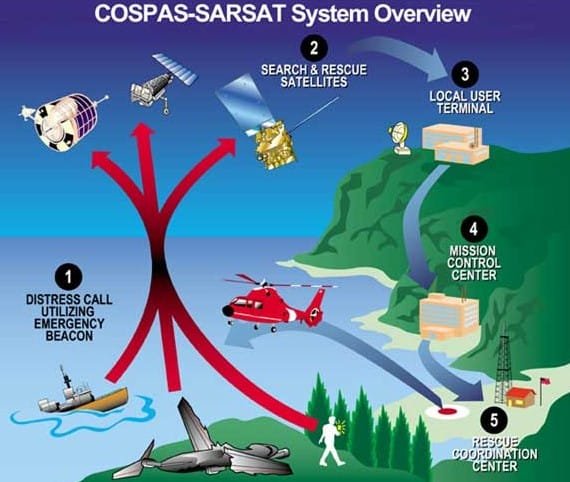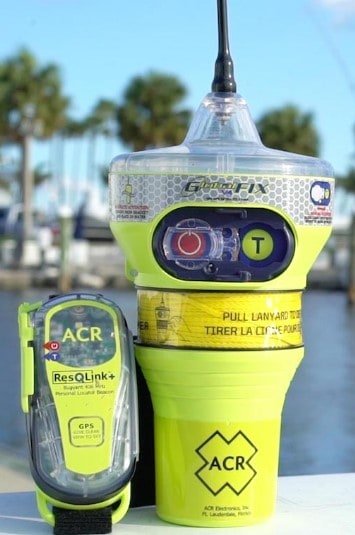General
Comparing EPIRB and PLB: Which is Right for You?
Comparing EPIRB and PLB: Which is Right for You. An Emergency Position Indicating Radio Beacon (EPIRB) is a device that is used to alert rescue services in the event of an emergency at sea. It is carried on boats, aircraft, and other vehicles and is designed to transmit a distress signal to a satellite, which then relays the signal to a rescue coordination center.
How does an EPIRB work?
An EPIRB consists of a transmitter and a battery, which are housed in a water-resistant casing. The transmitter sends out a distress signal on the 406 MHz frequency, which is monitored by the international Cospas-Sarsat satellite system. The signal includes the EPIRB’s unique identification code, as well as the location of the distress event.

When the EPIRB is activated, either manually or automatically, the transmitter begins transmitting the distress signal. The signal is picked up by a satellite, which then relays the information to a rescue coordination center. The rescue coordination center can then use the information to dispatch a rescue team to the location of the distress event.
In addition to the distress signal, many EPIRBs also include a built-in GPS receiver, which allows the rescue coordination center to determine the precise location of the distress event. This is especially useful in situations where the exact location of the distress event is unknown.
EPIRBs are a vital piece of safety equipment for anyone who spends time on the water. They can be the difference between life and death in the event of an emergency at sea. If you own a boat or participate in other water-based activities, it is important to have an EPIRB on board and to know how to use it.
What is the difference between a PLB and EPRIB
A Personal Locator Beacon (PLB) and an Emergency Position Indicating Radio Beacon (EPIRB) are both devices that are used to alert rescue services in the event of an emergency. However, there are some differences between the two.
The main difference between a PLB and an EPIRB is the intended use and environment. PLBs are designed for use by individuals, such as hikers, climbers, or pilots, and are typically carried on the person. They are smaller and more portable than EPIRBs, and are intended for use in land-based or personal emergencies.
EPIRBs, on the other hand, are designed for use on boats, aircraft, and other vehicles. They are larger and more rugged than PLBs and are intended for use in marine or aviation emergencies. They are carried on the vessel and are activated either manually or automatically in the event of an emergency.
Both PLBs and EPIRBs transmit a distress signal on the 406 MHz frequency, which is monitored by the international Cospas-Sarsat satellite system. The signal includes the device’s unique identification code, as well as the location of the distress event. However, PLBs are generally limited to transmitting the distress signal, while EPIRBs may also include additional features such as a built-in GPS receiver or a homing beacon to assist in the rescue effort.
In summary, the main difference between a PLB and an EPIRB is the intended use and environment. PLBs are designed for use by individuals in land-based or personal emergencies, while EPIRBs are designed for use on vessels in marine or aviation emergencies.
How does an PLB work?
A Personal Locator Beacon (PLB) is a device that is used to alert rescue services in the event of an emergency. It is carried on the person and is designed to transmit a distress signal to a satellite, which then relays the signal to a rescue coordination center.
A PLB consists of a transmitter and a battery, which are housed in a water-resistant casing. The transmitter sends out a distress signal on the 406 MHz frequency, which is monitored by the international Cospas-Sarsat satellite system. The signal includes the PLB’s unique identification code, as well as the location of the distress event.
When the PLB is activated, either manually or automatically, the transmitter begins transmitting the distress signal. The signal is picked up by a satellite, which then relays the information to a rescue coordination center. The rescue coordination center can then use the information to dispatch a rescue team to the location of the distress event.
In addition to the distress signal, many PLBs also include a built-in GPS receiver, which allows the rescue coordination center to determine the precise location of the distress event. This is especially useful in situations where the exact location of the distress event is unknown.
PLBs are a vital piece of safety equipment for anyone who participates in outdoor activities, such as hiking, climbing, or backpacking. They can be the difference between life and death in the event of an emergency. If you participate in outdoor activities, it is important to have a PLB with you and to know how to use it.
Is a PLB a legal requirement?
In most countries, it is not a legal requirement to carry a Personal Locator Beacon (PLB) while participating in outdoor activities. However, it is generally recommended as a safety precaution, especially for activities that take place in remote or wilderness areas where rescue services may be difficult to reach.
In some countries, certain occupations or activities may require the use of a PLB or other emergency beacon. For example, in Australia, commercial pilots and aircraft operators are required to carry an EPIRB (Emergency Position Indicating Radio Beacon) or ELT (Emergency Locator Transmitter) while flying.
In the United States, the Federal Aviation Administration (FAA) requires aircraft to carry an ELT, but does not require individuals to carry a PLB while participating in outdoor activities. However, the U.S. Coast Guard does recommend that boaters carry an EPIRB or other emergency beacon while on the water.
While it is not a legal requirement to carry a PLB in most cases, it is always a good idea to have one with you as a precaution in case of an emergency. In an emergency situation, a PLB can be a lifesaving device by allowing rescue services to locate and assist you.
What is the best kind of PLB?
When choosing a Personal Locator Beacon (PLB), it is important to consider the features and capabilities of the different models available. Some factors to consider when choosing a PLB include:

- GPS: Many PLBs include a built-in GPS receiver, which allows the rescue coordination center to determine the precise location of the distress event. This is especially useful in situations where the exact location is unknown.
- Water resistance: It is important to choose a PLB that is water-resistant or waterproof, especially if you will be using it in wet or aquatic environments.
- Battery life: Consider the battery life of the PLB, as well as the type of battery it uses. Some PLBs have a long battery life and can be recharged, while others use disposable batteries.
- Size and weight: If you will be carrying the PLB with you, consider the size and weight of the device. Smaller and lighter PLBs may be more convenient to carry, but may have less battery life or fewer features.
- Price: PLBs range in price from a few hundred to over a thousand dollars. Consider your budget and the features you need when choosing a PLB.
It is also a good idea to read reviews and compare the features and capabilities of different PLB models before making a decision. A PLB is an important safety device, and it is worth taking the time to choose the right one for your needs.
By considering these factors, you can choose a PLB that is best suited to your needs and will provide you with peace of mind in the event of an emergency. Don’t take chances with your safety – invest in a reliable PLB to ensure that you are prepared for any situation.

